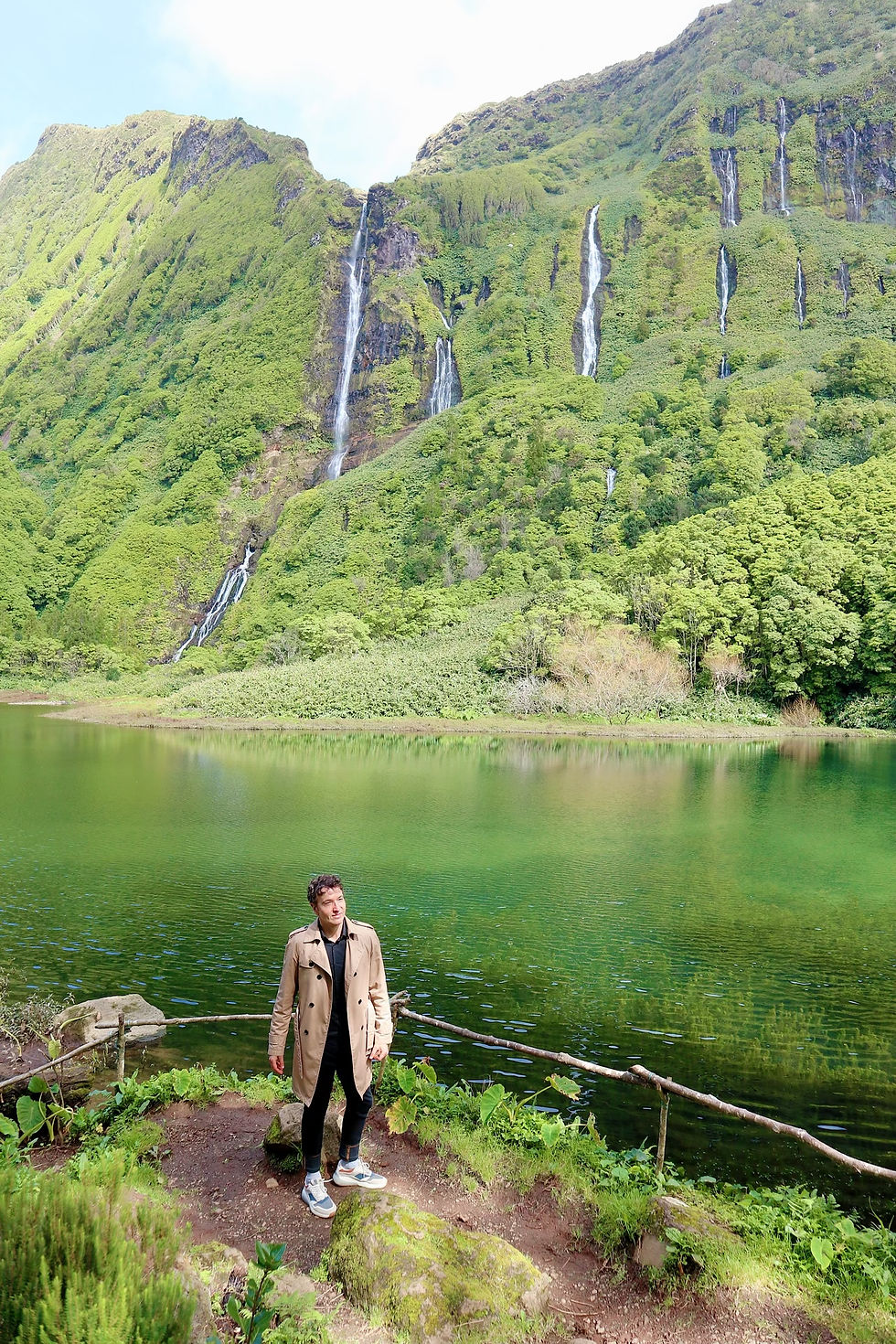
Pues si, se trata de un pequeño pueblo de poco más de 1500 habitantes en la isla de Flores y se llama Lajes. Este municipio tiene poco que ver pero el mero hecho de ser el más occidental de Europa ya merece la pena una visita.
Aquí podréis encontrar una bonita iglesia, un fantástico faro y, eso sí, unas impresionantes vistas al Atlántico que hace que tu mirada se pierda en el horizonte sin pensar absolutamente en nada.
El pueblo es tranquilo y se encuentra en la parte más occidental de Flores, que la llaman "isla del agua" debido a las numerosas cascadas y lagos que posee. Desde allí se puede llegar fácilmente a uno de los lugares más sorprendentes de la isla con una caminata de 1 hora (ida y vuelta): Poço da Ribeira do Ferreiro. Lo que vais a ver merece la pena la caminata: docenas de cascadas que caen en una laguna, una verdadera maravilla natural.
Considerado el paraje natural más famoso del archipiélago, la Rocha dos Bordões (Roca Bordões) es una visita imprescindible. Las rocas se formaron de forma natural como columnas que están cubiertas por vegetación. Es algo que no podrás ver en ningún otro lugar, sólo en las Azores.
Well, yes, it is a small village of just over 1500 inhabitants on the island of Flores and is called Lajes. This town has little to see but the mere fact of being the westernmost in Europe is worth a visit.
Here you can find a beautiful church, a fantastic lighthouse and, yes, a breathtaking view of the Atlantic that makes your eyes get lost in the horizon without thinking about anything at all.
The village is quiet and is located in the westernmost part of Flores, which is called "water island" because of the many waterfalls and lakes it has. From there you can easily reach one of the most amazing places on the island with a 1 hour walk (round trip): Poço da Ribeira do Ferreiro. What you will see is worth the hike: dozens of waterfalls cascading into a lagoon, a true natural wonder.
Considered the most famous natural site of the archipelago, the Rocha dos Bordões (Bordões Rock) is a must-see. The rocks were formed naturally as columns that are covered by vegetation. It is something you will not see anywhere else, only in the Azores.



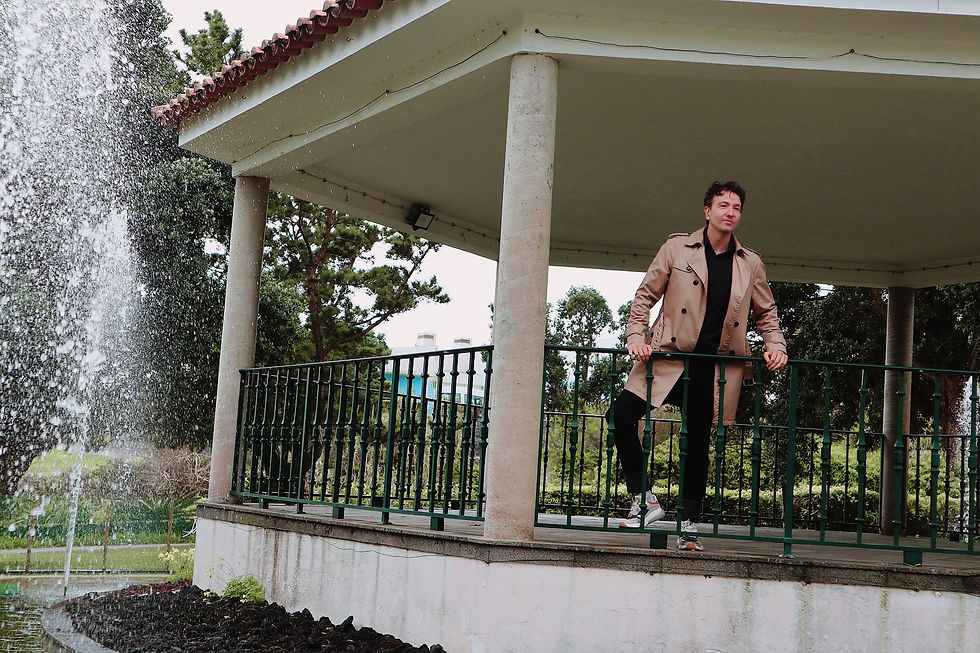
Pasear por las calles empedradas de Lajes Da Flores es, literalmente, no toparse con nadie. No sé vosotros, pero yo, acostumbrado a estar rodeado de gente casi a todas horas, agradezco cada vez más el silencio y la tranquilidad. Es por eso que me encantó este pequeño pueblo donde pasan muy pocos coches y lo único que vas a escuchar muy fuerte son tus propios pensamientos.
Supongo que es precisamente eso, la gran belleza del paisaje, junto a su tranquilidad y aislamiento, lo que ha supuesto un notable atractivo para no pocos visitantes europeos que buscan el contacto con la naturaleza y con los habitantes de la isla.
¿Cuándo visitar la isla?
En general, no hay mala época para explorar la Isla de las Flores porque el clima sigue siendo suave y templado todo el año. Dicho esto, es importante saber que los meses de julio, agosto y septiembre son los más calurosos (24° de media) y soleados, mientras que los meses de noviembre a marzo son los más húmedos. Sin embargo, hay que tener en cuenta que la isla de Flores se beneficia de un clima húmedo y que la lluvia no es rara, incluso en verano.
Para disfrutar de los paisajes floridos y coloridos, sólo podemos aconsejarles que vayan allí en primavera o verano, cuando las hortensias, camelias, azaleas y otras flores están en flor.
Walking through the cobblestone streets of Lajes Da Flores is, literally, not running into anyone. I don't know about you, for me, used to being surrounded by people almost all the time, I appreciate the silence and tranquility more and more. That's why I loved this small town where very few cars pass by and the only thing you will hear very loud are your own thoughts.
I suppose it is precisely that, the great beauty of the landscape, together with its tranquility and isolation, that has been a remarkable attraction for quite a few European visitors seeking contact with nature and the island's inhabitants.
When to visit the island?
In general, there is no bad time to explore the Island of Flowers because the climate remains mild and temperate all year round. That said, it is important to know that the months of July, August and September are the hottest (24° on average) and sunniest, while the months of November to March are the wettest. However, it should be noted that the island of Flores benefits from a humid climate and that rain is not rare, even in summer.
To enjoy the flowery and colorful landscapes, we can only advise you to go there in spring or summer, when hydrangeas, camellias, azaleas and other flowers are in bloom.
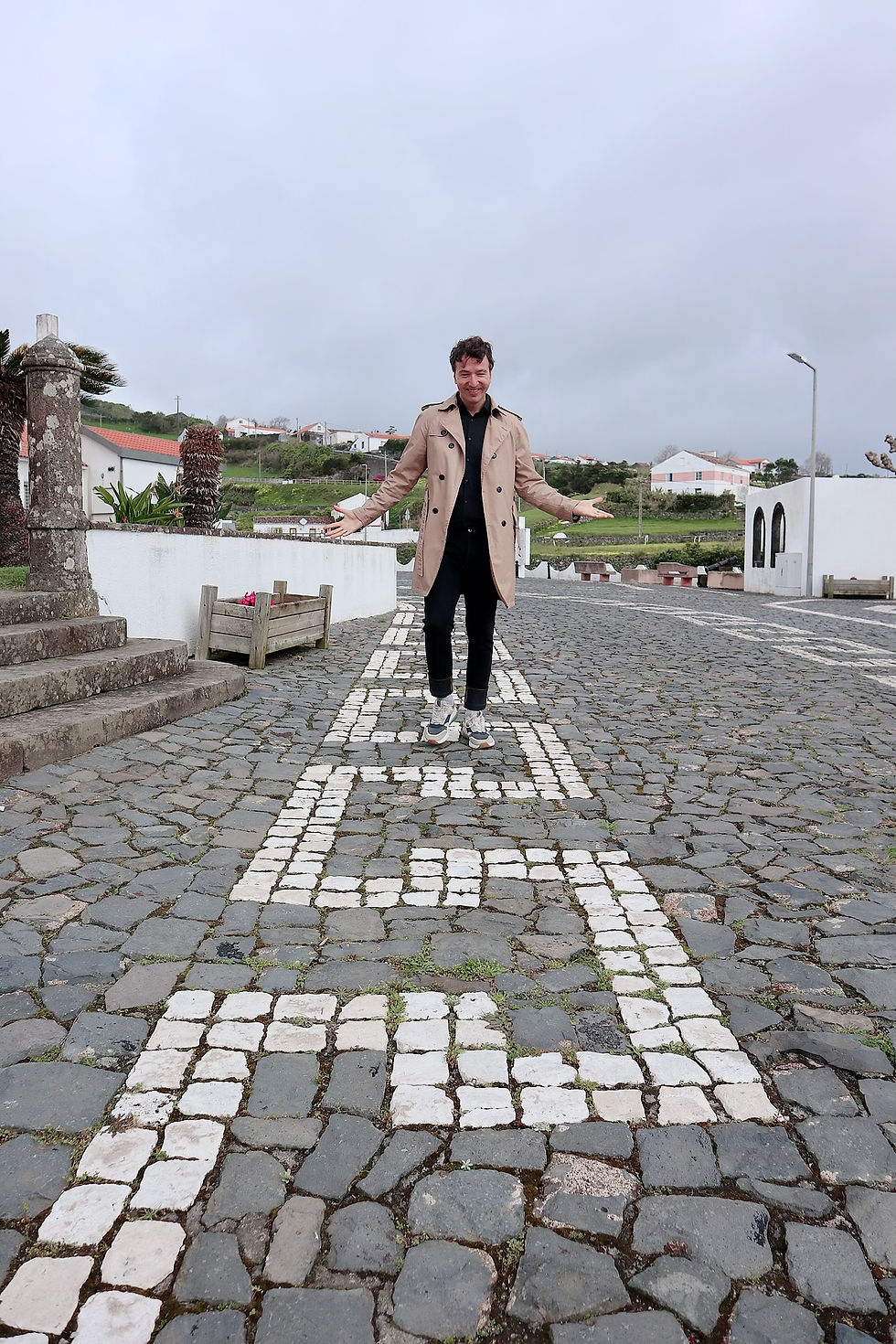





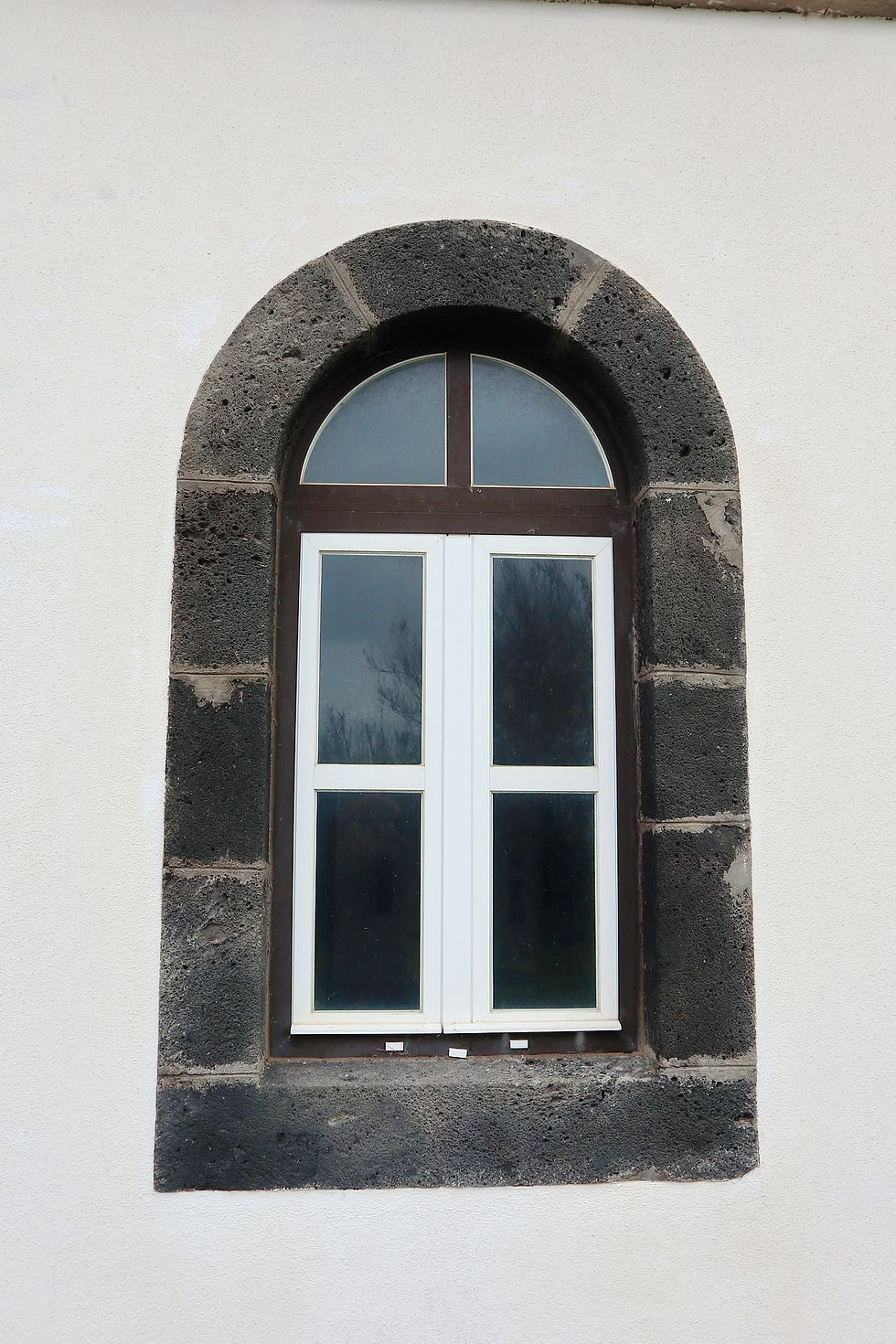
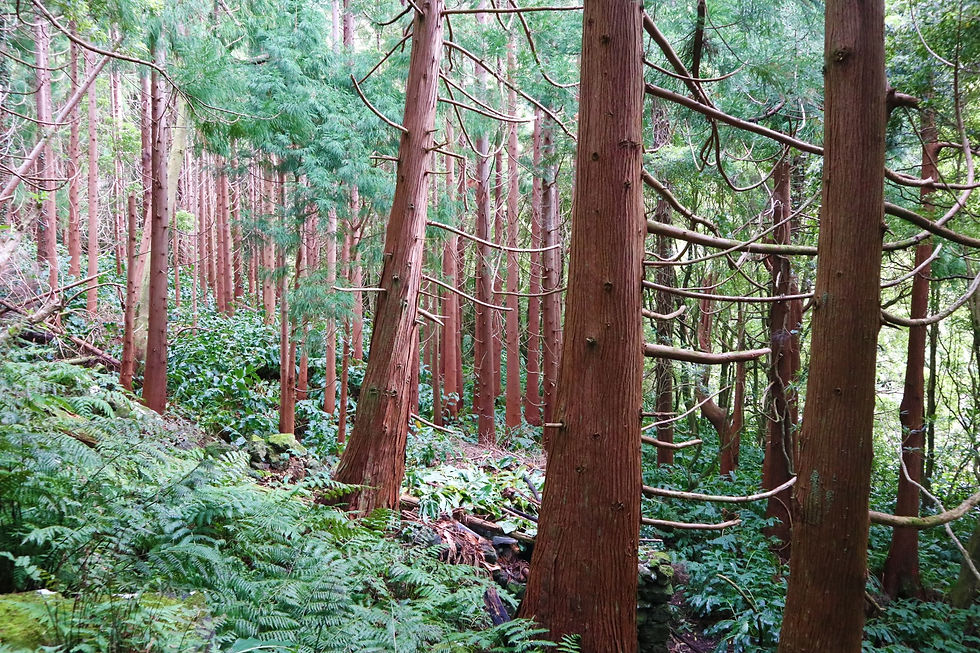
¿A qué os recuerda a los paisajes de Irlanda o Suiza? Basta pensar en las verdes colinas, las lagunas vírgenes o las numerosas ensenadas de aguas transparentes que desembocan en los lagos para pensar que nos encontramos en tierras irlandesas o suizas, pero nada más lejos de la realidad; estamos en pleno océano Atlántico,
Visitar Flores significa entrar en un mundo tranquilo y pacífico, alejado años luz del caos de nuestras ciudades y de la vida frenética a la que nos enfrentamos todos los días. Una isla llena de senderos, naturaleza y paisajes impresionantes.
Un paraíso en la tierra.
Doesn't it remind you of the landscapes of Ireland or Switzerland? Just think of the green hills, the unspoiled lagoons or the many inlets of clear waters that flow into the lakes to think that we are in Irish or Swiss lands, but nothing could be further from the truth; we are in the middle of the Atlantic Ocean,
Visiting Flores means entering a quiet and peaceful world, light years away from the chaos of our cities and the frenetic life we face every day. An island full of trails, nature and breathtaking landscapes.
A paradise on earth.

Llevo puesta una gabardina de ZADIG & VOLTAIRE, camisa de COS, pantalones de BALENCIAGA y zapatillas de MANGO
I'm wearing a ZADIG & VOLTAIRE trench coat, COS shirt, BALENCIAGA pants and MANGO sneakers.
Comments